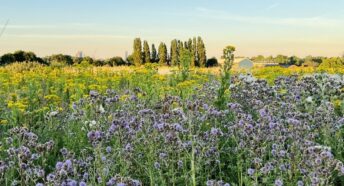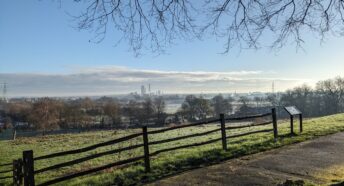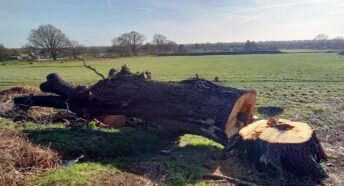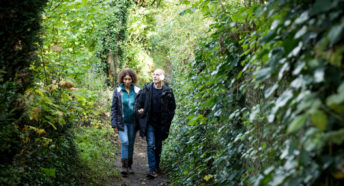Why are London’s parks coming under threat?
CPRE London is contacted on a weekly basis about sites under threat from planning applications and other proposals. Here we set out why London’s parks are coming under threat.
This is explored in more detail in our Forever Green? report. Find out how we are working to counter these threats here.
Financial gain. Planning permission increases land value and any land in London is worth a small fortune if planning permission can be gained. For example, the City of London Corporation, which owns and is custodian of West Ham Park, wishes to build housing on a section of the park to raise money to manage the park. Read more about the Friends of West Ham Park’s Save the Nursery Campaign.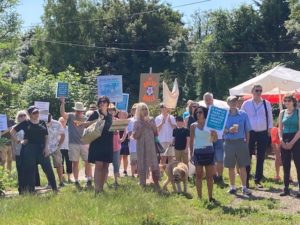
What we say: All parks in London are suffering from tight budgets. Selling off parks to pay for maintenance is not the answer. Firstly, park budgets are tiny compared to other council services, and particularly small compared to the health, wellbeing and environmental benefits they provide. It’s a false economy to cut a budget which is already tiny. Second, there other, better ways to manage parks expenditure, such as to create low-maintenance planting; or to work with Park Friends Groups who can help with some aspects of maintenance or can help apply for grant funding, for example. Remember, once a park’s gone, it’s gone forever. Selling off a park to pay for maintenance should never be considered as an option.
Professional football or public park? The close relationships between football clubs and councils means they have often collaborated to take over land protected by Green Belt or Metropolitan Open Land designations or used as public parks. For example, Enfield Council is set to lease Spurs part of Whitewebbs Park in Enfield for a training facility. Southwark Council recently gave permission for Dulwich Hamlet’s new stadium to be built on Green Dale Park. Ealing Council gave QPR permission for a training facility on Warren Farm Playing Fields (QPR has since pulled out following legal action). Redbridge Council is rumoured to be discussing leasing a community playing field to West Ham FC. Read more about Whitewebbs Park and Warren Farm Nature Reserve campaigns.
What we say: Private and/or exclusive facilities are not the same as those providing public amenity. Disposing of public parks or restricting their use for private gain is highly questionable, shortsighted and, we believe, unlawful. Boroughs should not be handing public assets to private interests.
Private land: public amenity. Many of London’s protected green spaces are privately owned but have a covenant for public amenity use. Sometimes they are also part of a park. If the site is run by a sports club, it might not appear to be for public use, but it is for public benefit, providing anyone can join or play at a reasonable cost. The All England Lawn Tennis Club bought the Wimbledon Park Golf Course, a local public amenity, and now wants to expand the Wimbledon Tournament grounds onto it, which would remove public amenity almost entirely. Follow the Save Wimbledon Park campaign.
What we say: Golf courses might be losing popularity but they can still be repurposed to provide other kinds of public amenity such as open parkland or nature reserves. Removing public amenity from a site (enabling private or exclusive interests to gain advantage) is highly questionable, short-sighted and we believe unlawful. As above, boroughs should not be undermining covenants which provide for public amenity, in favour of private or exclusive interests.
School development. Historically, many green spaces in London have been lost to school development and these pressures continue. The reasons are not always clearly stated possibly because boroughs feel such a development might not encounter opposition to such public institutions. Or they might be unwilling to consider the sometimes more complex option of expanding school capacity on existing sites, for example by adding an extra storey. Most recently Bromley Council permitted the development of a school at Belmont Open Space.
What we say: There are many pressures on land in London: we need housing, schools, employment space and other essential development. But we also need green spaces more than ever before particularly as London becomes more densely populated and the amount of green space per head is decreasing. As with other development, new schools must be located on brownfield, not greenfield, sites.
Dereliction and neglect. Too many green space sites in London have fallen into disuse and become derelict. Often this is deliberate: the owners, whether a private company, individual or local authority, might allow the site to be neglected with a view to gaining planning permission later. If it can be demonstrated, as a result, that the site is not providing public amenity, it might then be easier for them to argue it is not needed. Owners of one of the sites near the River Quaggy in Greenwich have even managed to get a covenant restricting its use lifted and now other fields in the vicinity have been fenced off and owners have made sports fields unavailable for booking with an eye on future development opportunities. Read more about how we’re promoting turning neglected and derelict land into Ten New Parks for London.
What we say: Boroughs should actively identify any sites which are intended for public amenity, but where public access or use has been deliberately blocked or where owners are failing to manage the space for public amenity. Boroughs should use statutory powers to require clean up of land where applicable. They should make clear they will not allow the site to be developed and should support local community groups, and owners, to bring sites back into use.
Incremental development. One small building or change to surfacing can often lead to expansion of buildings in a park; sometimes land is converted to hardstanding for car parking and, over time, people forget it should be protected green space. New hard surfacing in Victoria Park in Tower Hamlets, on what was once a grassed area used for informal recreation, is now regularly being used for car parking for film crews thereby blighting a large area. Elsewhere, Thames Water created a temporary depot on a large site in the Lea Valley Regional Park which subsequently came under threat from a planning application. Local campaigners are now trying to buy the site for the park. Read about the campaign to turn the Thames Water depot into a new ‘East London Waterworks Park‘.
What we say: Boroughs must not allow small, incremental development or hard surfacing on protected green space. They should ensure the presence of hardstanding is never used as a justification to permit development, as when Hackney Council permitted development on derelict ball courts in Shoreditch Park, thereby substantially reducing the size of the park.
Failure to use brownfield land. National and London panning policies state ‘brownfield’ sites should be used before greenfield sites for new development. London has plenty of brownfield land but boroughs are failing to identify these sites, nor are they working with owners and developers to bring them forward for development. Read about our work promoting use of brownfield land.
What we say: Boroughs must identify brownfield sites including surface car parks in suitable locations, sites in need of regeneration or existing development which makes poor use of space. If they do this effectively and work with landowners and developers to bring sites forward, there should be no need at all to build on precious Green Belt or other protected or amenity green space.
Right-to-buy and estate regeneration. Over many years, the ‘right to buy’ council homes, with no replacement of those homes, has meant council housing stock has been substantially depleted. Estate regeneration or ‘infill’ development on London’s council estates is a means by which boroughs, who own the land, can make the building of new, much-needed social housing financially viable. It is becoming increasingly common around London and can mean the loss of valued green or communal open space on those estates. As long as the ‘right to buy’ remains in its current form, green spaces will continue to be under pressure, and genuinely affordable housing will continue to be depleted. Read more about protecting green spaces on estates.
What we say: Boroughs should not ‘infill’ on open green or play spaces which are clearly used as valuable amenity space. They should also create new green and play space on estates by converting ‘grey space’ currently given to roads or car parking, so that they maintain at least the same amount of green space per person as before and create more if the amount per person falls short of borough standards.
Inappropriate political pressure. Sometimes politicians make commitments towards a good cause without taking account of wider, longer term considerations. For example, politicians at all levels and from all parties have given their support to the building of a new holocaust memorial on one of London’s Royal Parks, Victoria Tower Gardens, next to the Houses of Parliament. This is despite it being one of the few green spaces left in central Westminster, offering great views of the river and Parliament, and the availability of more suitable sites in the vicinity. Read about the campaign to Save Victoria Tower Gardens.
What we say: Too often short-term political interests seem to override the long-term importance of protecting precious green spaces for future generations. It is important to have a holocaust memorial but there are more appropriate, available, alternative sites where it could and should be located. We need politicians to question their support for locating the memorial on this site and actively promote another more appropriate location.




